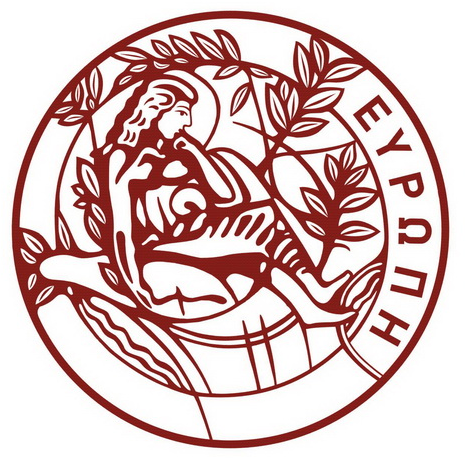PhD Candidate
AIKATERINI ZOI PEPONAKI
kpeponaki@materials.uoc.gr
Phone
Office
Personal web page
Title
Visocelasticity and Nonlinear Rheology of Cyclic Macromolecules and Their Mixtures
Supervisor
VLASSOPOULOS DIMITRIOS, Professor, Materials Science & Technology Dept. - UOC
Committee Members
MAVRANTZAS VLASIS, ,
GLYNOS EMMANOYIL, ,
Abstract
One of the great challenges in polymer science has been the understanding and control of macromolecular motion. This reflects the viscoelasticity and the structure-property relationships of polymers, which extend over a broad range of length and time scales, depend on macromolecular architecture and composition, and are responsible for their processing and final properties. The mechanisms that describe the behaviour of linear polymers are the tube model along with the contour length fluctuations and the thermal constraint release. While, in the case of the branched macromolecules, due to the presence of only one free end and another fixed, the stress relaxation takes place via arm retraction through the concept of hierarchical relaxation. The origin of these mechanisms lies to the movement of the chain ends. Ring polymers call into question our fundamental understanding of polymer dynamics because the absence of free ends alters flow behavior, diffusion, and ordering transitions compared to linear macromolecules. They are promising candidates for several materials science applications, and essential to fundamental life processes, playing a key role in biology and biotechnology, including DNA replication and maintenance of circular genomes, DNA looping, biologically active macrocycles such as drugs, even cancer growth. Due to the absence of chain ends and their particular loop topology, they exhibit dynamic and viscoelastic properties that cannot be explained by tube-model theories. The rheology of entangled ring polymers has remained a highly controversial topic with conflicting experimental data. In 2008 it was demonstrated that the presence of tiny amounts of unlinked linear chains altered the dynamics of rings dramatically. The development of appropriate purification via liquid chromatography at the critical condition opened the route for further developments with experiments modeling and simulations. However, despite significant recent advances, the rheology of entangled ring melts still poses formidable challenges. First, the limits of the existing framework for understanding ring dynamics are still blurred. Thus, exploring the behaviour of rings with very high molar mass are needed. Next, solution properties of rings in the non-dilute regime are virtually non-existent, yet this is an important regime to explore because of the possible differences from linear polymers as in the melt case, the possible topological arrest of motion at high concentrations and the biological relevance. In addition, nonlinear shear and elongational rheology are virtually unexplored. Yet, fragmental recent evidence indicates a behavior departing from that of their linear counterparts, offering important insights in polymer physics. Nonlinear measurements with entangled polymers and require appropriate instrumentation. Another aspect of these unique architectures is that the polymer blends based on rings offer a promising avenue to tailor rheology and explore the physics of threading, which is still in its infancy. To properly address the above grand challenges and substantially improve our knowledge of the role of molecular topology on flow, a combination of experiments and simulations is necessary. Thus, the plan of action in this proposition is the study of linear and nonlinear rheology of entangled non-concatenated rings of synthetic polymers by combining experiments with simulations under shear and planar and uniaxial extension (elongation) that can directly probe transient and steady-state response to an applied flow. Given the dramatic effect of linear chain contamination and the role of rings in altering the viscosity of polymer matrices, we plan to study not only pure rings but also symmetric and asymmetric blends of rings with their linear counterparts covering the full composition spectrum for molecular weights that correspond to unentangled, moderately entangled and fully entangled melts. We shall also investigate the static and dynamic properties of ring polymer solutions in the semi-dilute and concentrated regime. Analyzing the differences in the response of ring vs linear polymers and their blends at the molecular level will advance our understanding and provide new insights on the development of threading phenomena between ring and linear molecules and their consequences on diffusion dynamics in solution and rheological response in the melt. Eventually, this information can help formulating constitutive models for the rheology of ring polymers which are currently missing.


